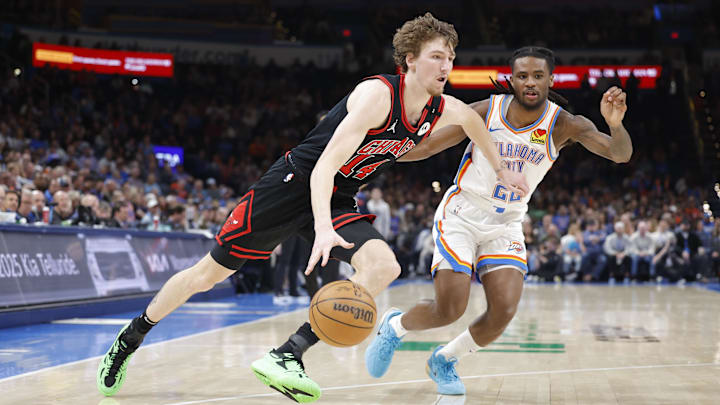Chicago Bulls' sophomore Matas Buzelis enters his second NBA season under immense pressure. Just a year ago, he was buried on the depth chart. Now, a year later, the first-round pick is being hailed as the franchise’s potential savior.
This kind of expectation isn’t new to Buzelis. The 6-foot-10 wing has been on the radar for years, earning McDonald’s All-American honors in 2023 and once being touted as a potential No. 1 pick in the 2024 NBA Draft before joining the G League Ignite.
Matas Buzelis faces pressure as the face of the franchise
However, like many who took the Ignite route, Buzelis saw his draft stock dip. He struggled with efficiency and never quite delivered on his once-hyped jumbo-playmaker archetype. That slide landed him with the Bulls at No. 11 overall, and it wasn’t until January that the Chicago native carved out a consistent role in Billy Donovan’s rotation.
Nonetheless, the time spent waiting in the wings seemed to benefit Buzelis. As a starter, he averaged 13.0 points, 4.5 rebounds, and 1.9 assists while shooting 47.3 percent from the field and 34.9 percent from three across 31 games.
Yet, like most rookies, Buzelis has plenty of room to grow. Most notably, the jumbo-playmaker skills he was once touted for still haven’t fully materialized. He finished with just 79 assists to 74 turnovers and relied heavily on others to create his looks—with nearly 81 percent of his field goals coming off assists.
Though he showed plenty of promise as a driver, Buzelis’s ability to create his own shot was far more evident when attacking the rim than when shooting from outside. Nearly 70 percent of his two-pointers were assisted, compared to almost 98 percent of his three-pointers.
Buzelis will be tasked with improving as a playmaker
Consequently, with the goal of expanding Buzelis’ all-around offensive game, and as Chicago’s best bet at producing an All-Star, the Bulls have clearly emphasized getting the sophomore more involved in playmaking duties.
In an abbreviated Summer League stint, the Bulls tasked Buzelis with creating his own offense. He didn’t exactly impress as a playmaker, averaging just 1.0 assist over two games, but he took plenty of shots, both at the rim and from beyond the arc, while drawing a host of fouls. Across his two appearances, he averaged 14.0 field goals and 10.0 free throw attempts, with a 29.7 usage rate that led the Bulls’ Summer League squad by a wide margin.
Of course, Buzelis probably won’t average 14 field goals, attempt 10 free throws, or carry a near-30 percent usage rate this season—but it’s clear the ball will be in his hands much more in his second year in Chicago, setting up a steep learning curve.
Like last season, it will take time for Buzelis to grow accustomed to his new role, except this time, he’ll be thrust into it as a day-one starter. On the plus side, Chicago isn’t without playmakers: passing phenom Josh Giddey and do-it-all scorer Coby White are set to man the backcourt.
Alas, neither Giddey nor White is a true primary option, at least not yet, which puts immense pressure on Buzelis. He’ll be tasked with initiating offense against NBA defenses for the first time in his young career. While he’s shown promise as a creative driver, his playmaking and off-the-bounce shooting remain largely untested—until now.
